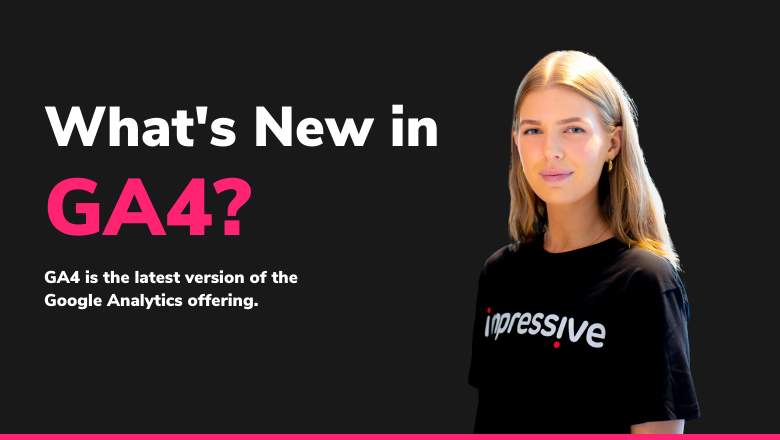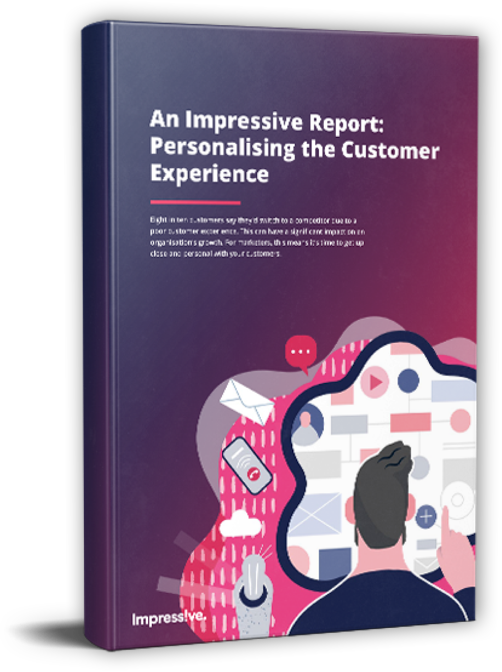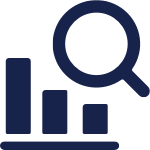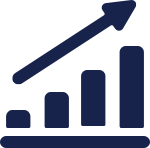If you’ve ever tracked user behaviour or sought insight into traffic and website performance, you’ve probably used Google Analytics. SEO and digital marketing rely so heavily on Google’s metrics that it makes sense to use the search engine giant’s own tools to understand how you’re faring online.
GA4 is the latest version of the Google Analytics offering. If you’re not using this already, you’ll need to start making the migration soon, as Google is withdrawing support for earlier versions in the coming months. But before we get into that, let’s take a look at what GA4 actually is.
What Is GA4?
The GA4 solution was launched in 2020 as an updated version of Google’s popular Analytics tool. The aim of this latest version is to reflect changes in the digital strategies of many organisations across the online landscape, along with new forms of user behaviour. Increasingly, organisations were adopting an omnichannel approach to digital marketing, as well as users following new pathways to connect with organisations online. In the face of these changes, the old methods of analysis were no longer providing the right sort of insight for businesses seeking to boost engagement and conversion, and so GA4 was developed to fill the gap.
The ‘Canonical’ New Google Analytics
While GA4 itself has been around for a few years already, its position is changing. GA4 is going to be the ‘canonical’ new version of Google Analytics by the end of this year. Basically, if you use Google Analytics in the future, you’re going to be using GA4. What’s more, time is running out to make the change.
Currently, Universal Analytics (UA) and Google Analytics 360 are still in use and are still supported. However, UA won’t collect any more data from July 1, 2023, essentially rendering it obsolete. You’ll still be able to access historical data for an extra six months after this date, but the solution is being phased out. GA360 will be phased out, too and will stop collecting data from July 1, 2024.
It’s a good idea to get a head start on these changes and switch to GA4 before the rug gets pulled out from under you.
What’s Changed?
The digital marketing landscape has changed in recent years, so analytic programs need to change too. Here’s what is new in GA4 – including new features built into the initial solution or an update released over the last few years of operation.
Behaviour-focused Metrics
Metrics like bounce rate and average session duration don’t tell us much, so GA4 offers a more behaviour-focused approach. This means measuring the engagement of the user and engaged session rather than just how long a user had a page open. This is far, far more insightful for marketers.
Individual Conversions
GA4 reflects the complex nature of conversions. A lead may convert multiple times in a session – purchasing products, signing up for subscriptions, joining a support network, or a combination of all three. Previous iterations of Google Analytics did not recognise these instances as independent, but GA4 does.
Unified Data
Users might access your content via a static website, a browser-based application, PC software, or a mobile application. In this more diverse environment, you need to be able to view and measure this data in a unified fashion, understanding the behaviour of users right across the omnichannel environment. GA4 is geared towards this.
New Session Definition
Sessions are defined differently in GA4, and the tool focuses on session start times – triggered by a certain event – rather than session duration. Sessions can also continue beyond midnight – a standard cut-off and reset point on earlier iterations of the tool – and even when the parameters and settings of the marketing campaign are changed.
Automatic Audience Migration
Building an audience list in GA4 makes it easy for you to populate audience lists in other Google tools. So, you can migrate your audience to Google Ads for remarking, for example. This is a minor tweak, but it is far more efficient than previous Analytics tools.
Diverse Identity Verification
Reflecting an omnichannel environment means beefing up identity-tracking capabilities. So, how does GA4 know it is dealing with the same user across multiple platforms and channels? By utilising four different identity methods – User ID, Device ID, Google Signals, and behavioural data modelling.
New Data Organisational Methods
With so much new data and so many new parameters, GA4 needs to display this in a new way. The way you navigate the solution may be a little different from what you have experienced before.
Learn More About Digital Marketing in 2023 and Beyond
Getting acquainted with GA4 is just one aspect of digital marketing in 2023. To discover more about what the future holds, and to get ready, reach out to our team today, schedule a consultation, and get your Free Marketing Plan.






